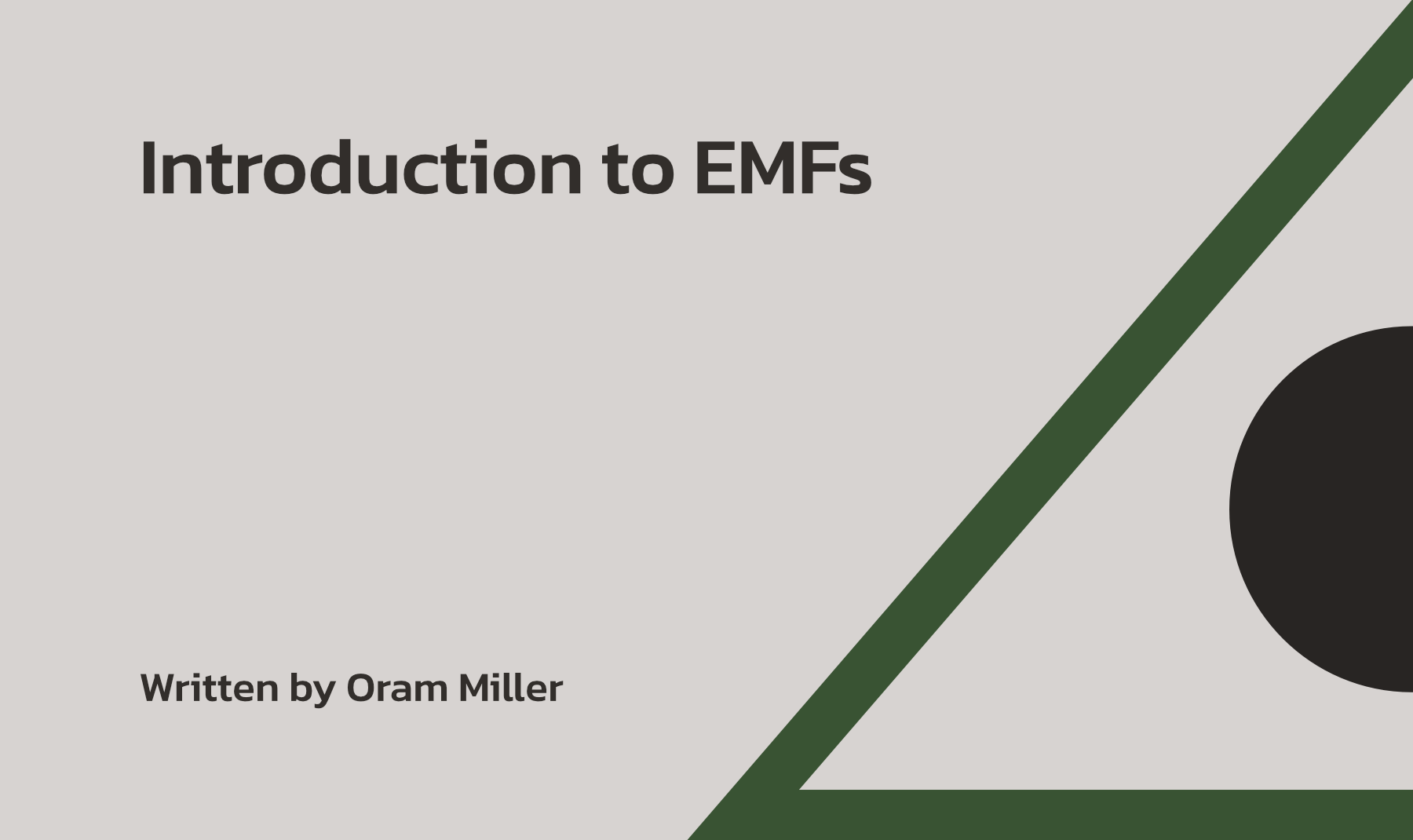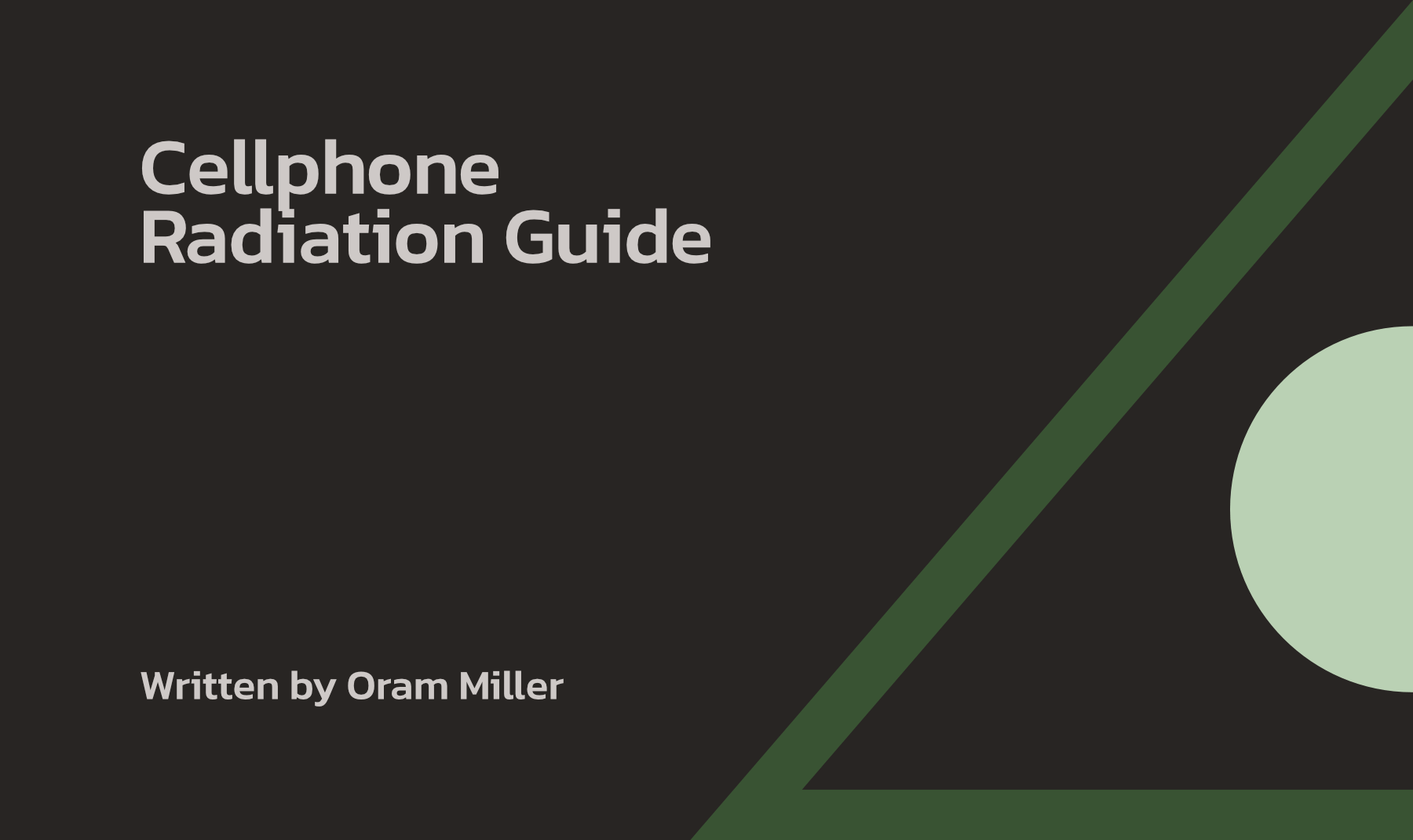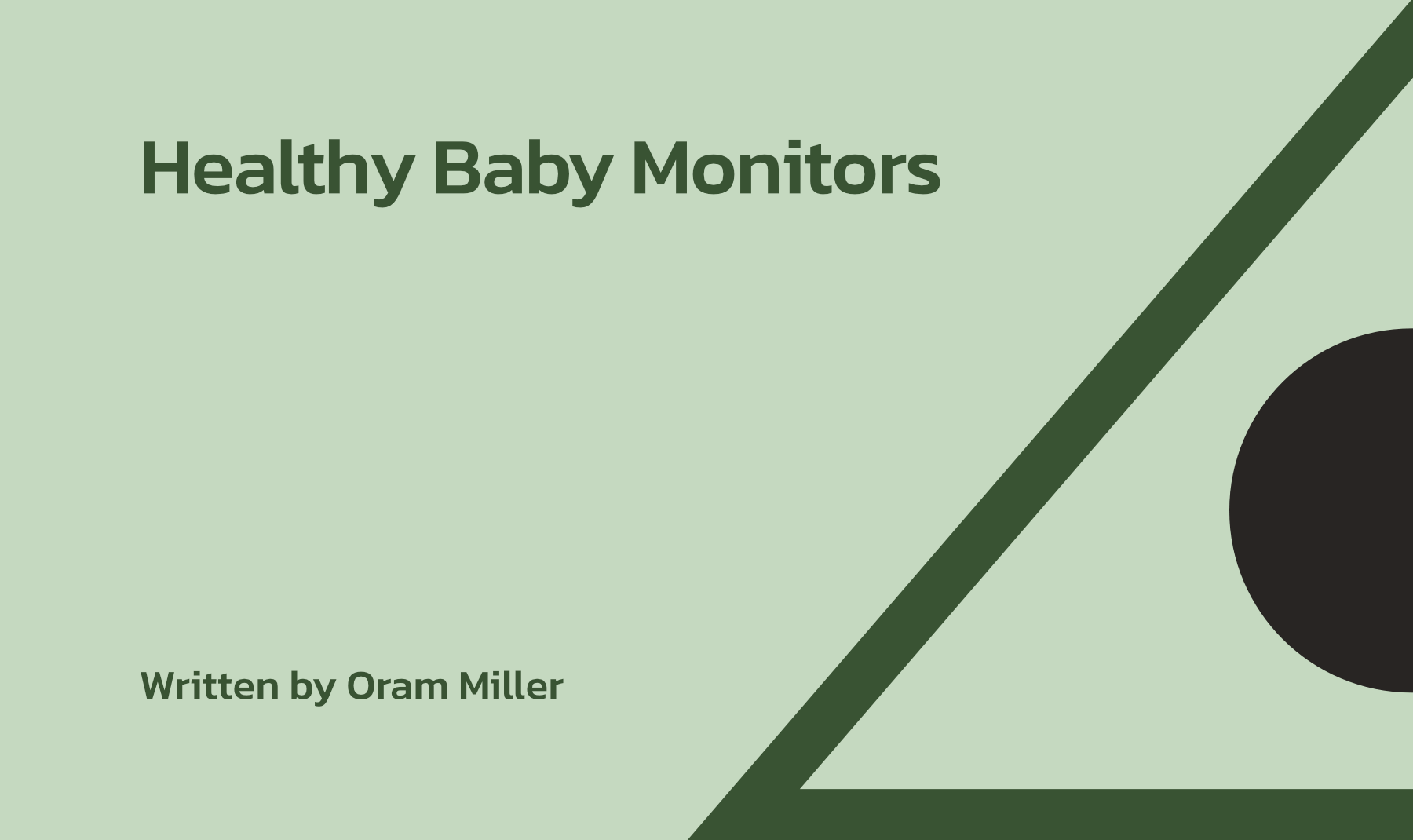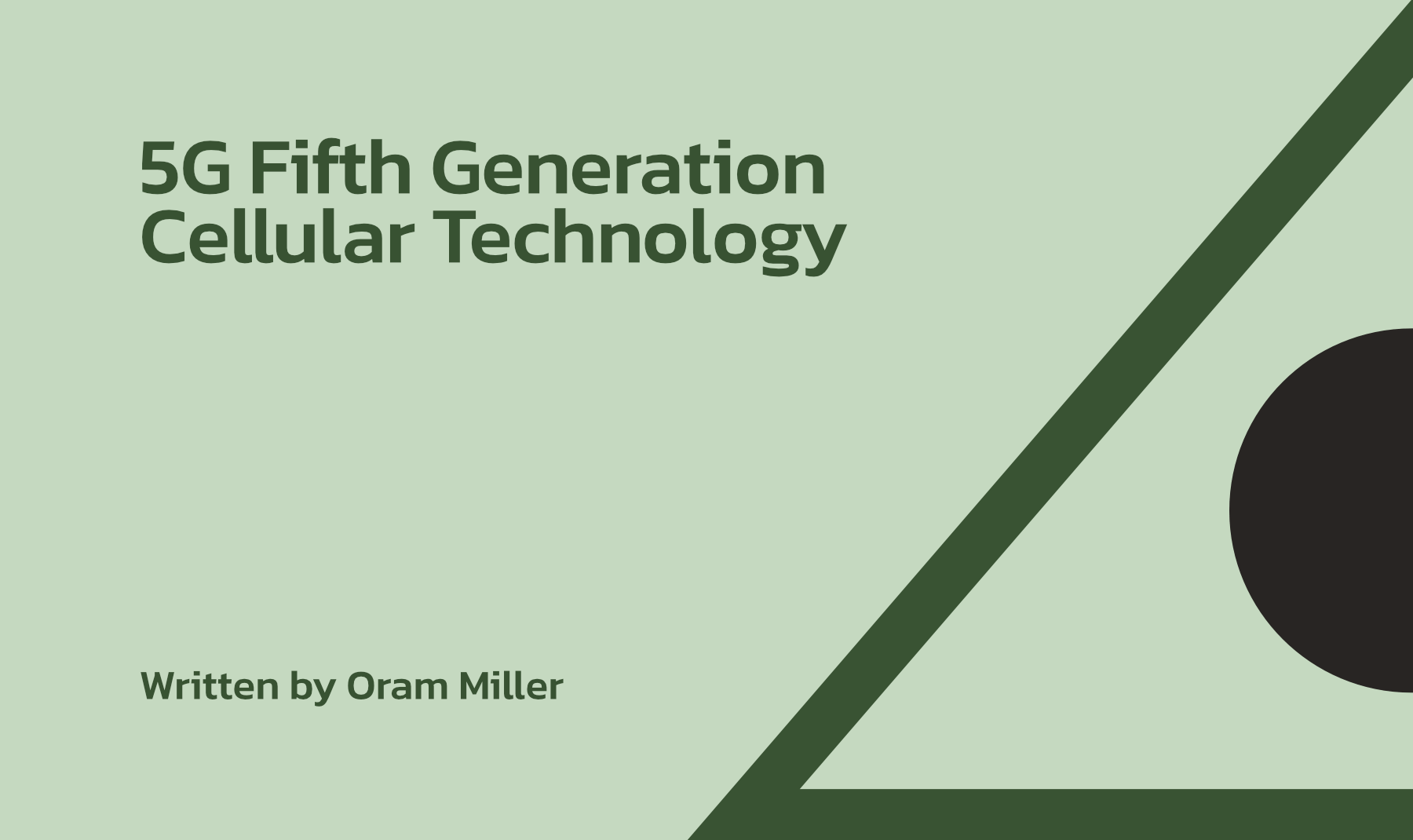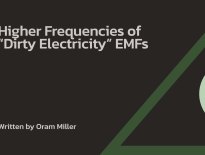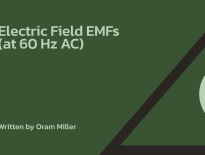Introduction
The topic of EMFs is vast and, unfortunately, rather complicated. I will attempt in this introductory article and in the separate articles I have written on each type of EMF to educate you on the basics. This includes where each type of EMF occurs, how it can affect human health, what we in the building biology profession consider to be safe exposure levels for each type, and what we do about them to mitigate their possible influence on your health.
To begin, all EMFs have an electric field component, the “E” in EMFs, and a magnetic field component, the “M” in EMFs. These two components are related but not the same. This includes any type of EMF you will see me discuss on this website or that you read about in other articles about EMFs on the Internet. What differentiates one type of EMF from another is whether we are discussing the electric or magnetic field and what frequency they occur at.
It gets a little complicated, but the first two types of EMFs that we discuss, electric fields and magnetic fields, are present wherever AC, or alternating current, electricity is present. That could be electricity on power lines and on wires inside houses (circuits in walls and the cords we plug in). It can also involve radio transmitters, where electricity at much higher frequencies is sent out into the air as wireless transmissions.
Any vector of one type of field that emits from a cord or wire has a corresponding vector of the other type of EMF that is positioned at right angles to the first type.

The following image, from livescience.com, shows this three-dimensional configuration where the electric and magnetic field components of electricity emit from a power line, circuit, cord or wireless transmitter at right angles to one another:
The important thing to know is whether these two fields are synchronous, or coupled, with each other or not. If they are coupled, then they rise and fall together. If you have one, you have the other. If you measure one, you can calculate the other. This is true for electric and magnetic fields in radio frequencies, or RF, up in the high frequency band (millions and billions of cycles per second) used for Wi-Fi and cell phones.
However, for electricity in the Extra Low Frequency, or ELF, band at 50-60 Hz, such as with house wiring, you can have the opposite condition where the electric and magnetic field components are not coupled. In that case, you can have high levels of one type of field but not the other.
The practical result is you can measure a low level of one type of EMF in a bedroom, such as AC magnetic fields, and think you have measured all EMFs, but if you don’t have a meter to measure the other type of EMF, which in this case is AC electric fields, those electric fields could be present, harming your physiology, without you knowing it. This is because you are not looking for them, but they are there.
Near and Far Fields

The point at which electric and magnetic fields become coupled is when you are within what is known as the far field. That is the distance that three or more wavelengths of the particular frequency travel out from the source, whether it is a circuit or a wireless transmitter. This can be seen in the image at left, from Wikipedia’s article on Near and Far Fields.
Within the near field, shown on the left in the image, the electric and the magnetic field components are completely uncoupled and can be separate from one another. You need separate meters to measure each type.
Now, let’s review the wavelengths for the four common types of EMFs that people encounter in their daily lives. The first two wavelengths are in house wiring and overhead and underground electric utility power lines (in certain circumstances). Those would be the AC electric fields from house wiring and overhead power lines, and AC magnetic fields from house wiring and certain power lines. Those are our first and second types of EMFs among the four that we recognize.
The reason they are considered separately is because the frequency that electricity on house wiring and power lines oscillates at is 60 Hz (Hertz), or 60 cycles per second. That frequency has an astonishingly huge wavelength of 3,100 miles for one wave! That means that the distance that the invisible electric and the magnetic field components of 60 Hz electricity take to complete one wave is the distance from California to New York. Assuming the wave starts in California, it will not crest until it reaches Denver, and it won’t dip back below the zero crossing point until it reaches the Midwest. It will hit its trough in Kentucky and finish in New York (not taking into account that we have bent a wave in our analogy to conform to the curve of the earth–the wave would actually emit directly out into space).
Obviously the strength of the field dissipates within a few feet away from the circuit in a home in Los Angeles, but the shape of the invisible sine wave does not change much at all as you move out over many miles. The far field, which is defined by engineers as roughly three times the distance of one wave and where electric and magnetic fields are always both present, would not start until you reached nine thousand miles.
Thus, for all practical purposes, when it comes to the electricity in the Extra Low Frequency (ELF) band at 60 Hz on house wiring and coming onto our property from power lines, we are never in the far field. That means, when we measure “EMFs” from house wiring and power lines, if we use only a Gauss meter and see that the level of magnetic fields, for instance, in the bedroom is low, or it’s high and we are able to lower it, that does not mean we have identified and removed all EMFs. We have only dealt with the “M” of the EMF, the magnetic field.
The problem is, we still have the “E” of the EMF to deal with, and that is the electric field. That field comes from unshielded, plastic-jacketed Romex electric circuits in walls and floors. Electric fields also come from plastic-jacketed AC power cords that we plug into outlets. Electric fields pass right through insulation and sheetrock, extending right into a room up to six to eight feet from walls and cords. Unfortunately, electric fields prevent deep, refreshing sleep.
Magnetic Fields
In my opinion, magnetic fields are the least common but most harmful type of EMF. I have several clients who have depression, chronic fatigue and, even cancer that I believe was caused by magnetic fields from wiring errors in lighting circuits or current on grounding paths in their home. Magnetic fields should therefore be taken seriously and eliminated whenever and wherever found.
Magnetic fields from wiring errors are normally confined to parts of the home that we occupy in the day and evening time when lights and other electric loads are turned on and when the circuits that those loads are powered by have wiring errors. We turn those electric loads off at night when we sleep. That way, magnetic fields from wiring errors go away overnight.
Magnetic fields from current on grounding paths are also usually a daytime issue because bedrooms in many parts of the country are upstairs, away from grounding paths under the floor of the first floor. Thus, even though current passes on grounding paths 24/7, the magnetic field that that causes usually doesn’t reach the second floor in a two-floor house, where bedrooms are located.
In California and the Southwest, on the other hand, where we have no basements and bedrooms are often in the back of the house on the first floor, the main breaker panel is often on the bedroom wall, and current on grounding paths, which again is present 24/7, can run under the bedroom floor or overhead in the attic. You can also have a wiring error on a circuit that powers an appliance that runs through the night, such as a refrigerator or furnace/air conditioner blower motor, causing magnetic fields during the night. I have seen this. This is all explained in my article on AC Magnetic Fields.
Electric Fields
The primary way that electric fields, on the other hand, affect your health is that they rob you of a good night’s sleep. In the daytime, they can drain your energy when you put your hands on the wired keyboard of a computer that has an ungrounded plug. We also don’t want a refrigerator to have an ungrounded plug or be plugged into an outlet with a non-functional ground. Otherwise, normally healthy people can tolerate electric fields during the day when they sit within six to eight feet of plastic-jacketed Romex circuits in walls and unshielded plastic power cords. We do recommend rewiring table and floor lamps near where we sit and at desks, using MuCord from LessEMF.
I explain the identification and mitigation of magnetic and electric fields in separate articles on AC Magnetic Fields and AC Electric Fields, both of which are accessed from the Articles on EMFs page here.
Radio Frequency EMFs
The third type of EMF is radio frequency EMFs, or RF. They are produced close to our body and in our homes from transmitters in wireless devices, such as cell phones, tablets, laptops, routers, and cordless telephone handsets and their base units. Wireless frequencies also enter our homes from outside sources such as smart meters, cell antennas, airport radar, radio and television broadcast towers, and now 5G cell antennas.
One potential health effect from radio frequencies comes from long term, close range exposure to the the heating effects of the carrier wave in the microwave frequency at 600 MHz (MegaHertz) through 6,000 MHz (or 6 GHz). These are the frequencies in the low- to mid-band used by cellular carriers for 3G and 4G LTE cell service in the past decades. These are also the frequencies that 5G will continue to use in the coming decade with updated technology to cram more signals into the same airspace at faster speeds. 5G signals will also be broadcast in the high-band above 20 GHz using advanced technology such as beam forming.
2,400 MHz and 5,800 MHz, also known as 2.4 GHz (GigaHertz) and 5.8 GHz, are the predominant frequencies for Wi-Fi and cordless telephones. Do not confuse the 5.8 GHz frequency of Wi-Fi on routers and cordless telephones, often abbreviated on your router as “5G”, with fifth generation cell technology, also known as 5G. What many are not acknowledging is the harmful effects on the biological level of exposure to low levels of RF from wireless transmitters at close range as well as RF coming into our homes from ever closer sources, such as small cell antennas that are planned for urban and suburban neighborhoods. For more information, see my article on 5G by clicking here.
In the frequency range used by wireless transmitters, the wavelength of the sine wave for one wave is within the human dimension. At 900 MHz, a predominant frequency for 3G and 4G LTE cell phone service, the wavelength for one wave is 13 inches. For Wi-Fi at 2.4 GHz, the wavelength is 5 inches. Thus, the far field for a smart meter transmitting its Neighborhood Area Network (NAN) beacon and data signals begins roughly three times the wavelength, which would be three times 13 inches, or roughly three feet from the smart meter.

Thus, we recommend that anyone measuring smart meters with radio frequency detectors commonly available now should take their measurements at three feet and beyond for accuracy. This is because the electric field portion and the magnetic field portion of the transmission have not coalesced into a stable wave until they reach three wavelengths, which is the beginning of the far field. If you measure closer than three feet, you will get a reading, but it is not accurate.
One important distinction when measuring radio freqeuncy EMFs is that we do not measure magnetic nor electric fields separately, because they are all coupled in the far field. Instead, we measure what is known as power flux density, or PFD. That is measured in milliWatts per centimeter squared (mW/cm2) as the FCC does, or in microWatts per meter squared (µW/m2) as we and countries outside the US do. This is discussed in detail in the section entitled, “The FCC Versus the Rest of the World,” in my article on Radio Frequency EMFs, accessed from my Articles on EMFs page here.
Considering that the antennas on all commonly available radio frequency detectors are far field meters, we need to not pay attention to readings we get within the near field. We say, measure smart meters at three feet and beyond, if the primary frequency is at 900 MHz, which most of them are. When measuring Wi-Fi transmitters (routers, laptops, tablets), you can get as close as 15 inches and still get accurate readings. Within that distance, however, you are within the near field and your numbers will not be accurate.
Ultimately, to us, it doesn’t really matter how high these numbers go when we are showing them to clients, because they are all too high for protecting human health. Whether you smoke half a pack of cigarettes a day or two packs, it doesn’t matter. It’s all cigarettes. Everyone needs to use hardwired alternatives to wireless devices whenever we can. We say, reduce use, increase distance, and favor hardwired connections whenever and wherever possible. This is all discussed in more detail in my article on Radio Frequency EMFs, accessed from the Articles on EMFs page by clicking here.
Dirty Electricity
The fourth type of EMF, so-called “dirty electricity” (DE), is generally defined as the electric and magnetic field components of harmonic frequencies of the fundamental frequency of AC electricity on our circuits and power cords. That is, 60 Hz, or cycles per second, in North and South America (and 50 Hz in the rest of the world). Dirty electricity, or Microsurge Electrical Pollution (MEP) as we now call it in the building biology profession, generally begins at 120 Hz but is primarily measured in the 2,000 to 100,000 Hz range, or 2 kHz (kiloHertz) to 100 kHz.
Dirty electricity is produced by many electronic sources in homes, including dimmer switches, switched mode power supply transformers found in the base of compact fluorescent lamps (CFLs) and some LEDs, computers and printers, and variable speed motors, such as new energy-efficient furnaces, among other devices. Photo voltaic (PV) solar panel inverters create dirty electricity as a by-product of stepping low voltage DC (direct current) electricity produced by the sun up to 120 Volt AC (alternating current) electricity for use by the electric grid. Fortunately newer LEDs are becoming brighter, more affordable and cleaner from a DE perspective. You can now purchase so-called “line voltage” LEDs that run directly off 120 Volts and have no need for a transformer. I discuss this in my article, Healthy Lighting Choices, accessed by clicking here.
Smart electric meters have switched mode power supplies to step down the 120 Volts that enter into them to power the circuit boards that they contain. Those switched mode power supplies create dirty electricity. (Some brands of smart meters, notably Itron, appear to not use switched mode power supplies and therefore avoid DE from emerging onto circuits into the house. I was not able to detect any DE that I could confirm originated from any Itron smart meter I measured, according to studies I have conducted on Itron smart meters in Southern California. See results of my study here).
Dirty electricity has a fundamental frequency as well as harmonics of that frequency. The strength of each succeeding harmonic decreases as the frequency of the harmonics gets higher or faster. The fundamental frequency and its harmonics are carried as additional, faster frequencies that literally ride on top of the 60 Hz sine wave of AC electricity in circuits, plastic cords and outside power lines. They can be seen with an oscilloscope as faster frequencies superimposed upon the slower 60 Hz sine wave of electricity produced by the power company. On a spectrum analyzer, they are seen as additional spikes at higher frequencies as you move from left to right on the graph.
Both the electric field and the magnetic field components of dirty electricity frequencies emit off circuits, plastic power cords and power lines into the room and outdoor air, and they affect our health. Some people are particularly sensitive to them. This is all discussed in more detail in my article on Dirty Electricity, accessed from the Articles on EMFs page by clicking here.
We generally only measure the electric field component of dirty electricity when we use a Stetzer or Greenware microsurge meter. The units displayed on these two meters are variations of electric field strengths. To measure the magnetic field component, which is also there, one must use an oscilloscope and spectrum analyzer and/or sensitive, and expensive, Gauss meters.
Thus, we have four types of EMFs, each with its own frequency. The first two are actual electric and magnetic field components of electricity in the Extra Low Frequency (ELF) band of 50/60 Hz, the frequency of electric utility lines. These are measured differently, using separate meters, and come from house wiring and electric power lines.
The EMFs from wireless transmitters are measured as a composite number, the power flux density. Dirty electricity is typically measured with a plug-in meter that measures the electric field component of the dirty electricity, within the range of each meter.
I realize this is all quite confusing, but those of you who are interested in mastering and fully understanding EMFs need to re-read the information presented above, as well as the separate articles written by me and others on this topic, several times, over several sittings, to more fully absorb it.
Once you understand these basics, you can more easily understand how each type of EMF differs from the others and how you and we can best measure and mitigate them. Follow the links to the separate articles that I have written on each type of EMF, again accessed from the Articles on EMFs page here.
Hopefully this introduction will make it somewhat easier for you to understand what you read in those separate articles.
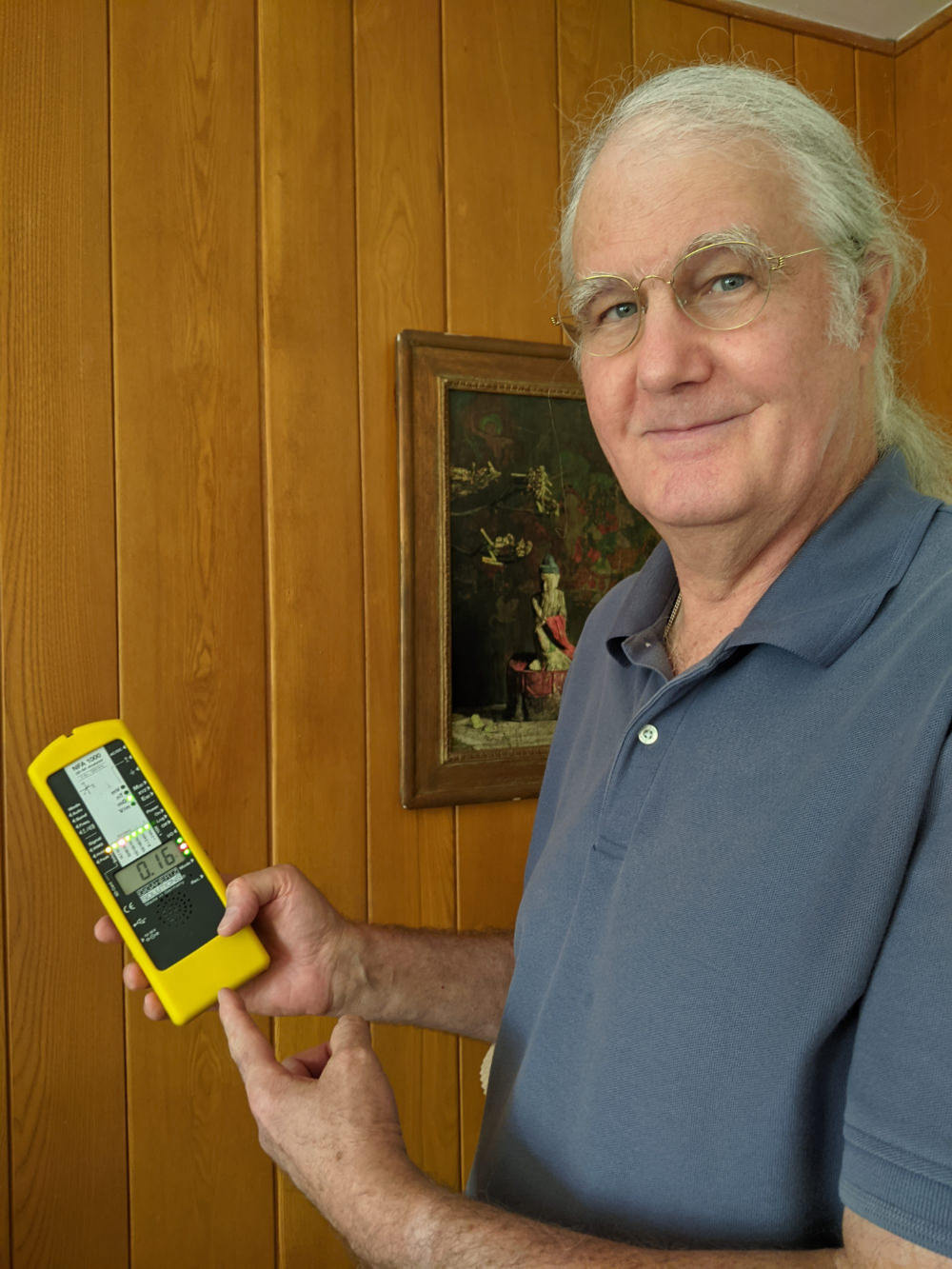
BBEC, EMRS, Certified Building Biology™ Environmental Consultant and Electromagnetic Radiation Specialist and Healthy New Building and Remodeling Consultant. Providing On-Site EMF Evaluations for Existing and New Homes and Offices in Los Angeles, Orange, Ventura, Riverside and San Diego Counties and Nationwide by Telephone and Skype. Based upon the principles of Building Biology™.
